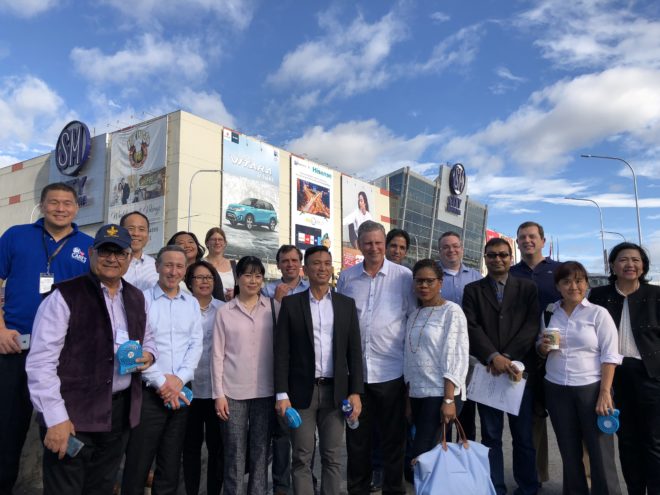
SM City Marikina was used as a model for disaster resilience, having been showcased in the Top Leaders Forum (TLF), an annual conference that aims to find concrete measures that would make businesses more resilient against disasters. The conference was hosted by SM Prime Holdings, Inc. (SM Prime) last November 29 at the Conrad Manila hotel in Pasay.
Delegates from the TLF visited SM City Marikina to learn about the mall’s features that make it resilient to natural disasters.
Among the delegates included Dr. Robert Glasser, Special Representative of the United Nations Secretary-General for Disaster Risk Reduction and Head of the United Nations Office for Disaster Risk Reduction (UNISDR). Marikina City Vice Mayor Jose Fabian Cadiz was also present during the event.

Dr. Glasser said that the UNISDR is very interested in looking at the Philippines as a model for disaster resilience because of its vulnerability to natural disasters.
“The Philippines is one of the most exposed countries in the Ring of Fire… You have volcanoes, earthquakes, tsunami risks, and extreme weather events,” Dr. Glasser said. “Because of the country’s exposure to these hazards, [the Philippines] is actually doing more than many other countries that have less experience in preparing for these hazards,” he added.
A model for resilience
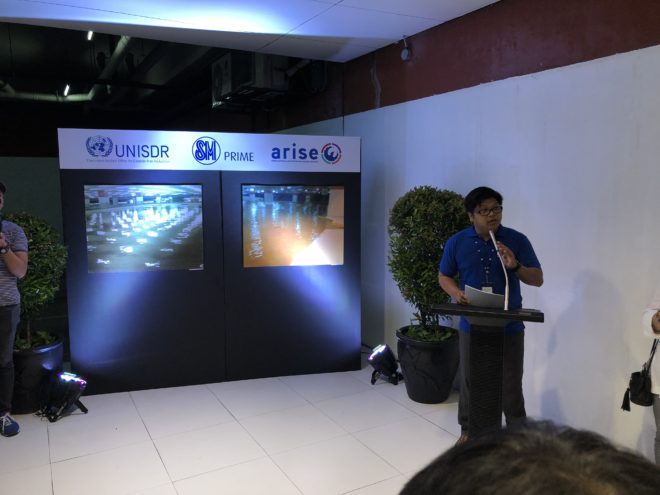
The mall visit emphasized how the structure and design of SM City Marikina were carefully considered to make the mall disaster resilient.
“When we were building the mall, we commissioned a study spanning a hundred years of flood data in the area, going beyond the annual flood cycles of areas for possible development, and then we added a meter more as allowance,” said Mr. Hans T. Sy, SM Prime Chairman of the Executive Committee. Mr. Sy also continues to lead private sector initiatives in the Philippines on disaster resiliency with his re-election as a member of the board of the United Nations International Strategy for Disaster Reduction (UNISDR) ARISE International Board, the top global business leaders’ group on disaster risk reduction management.
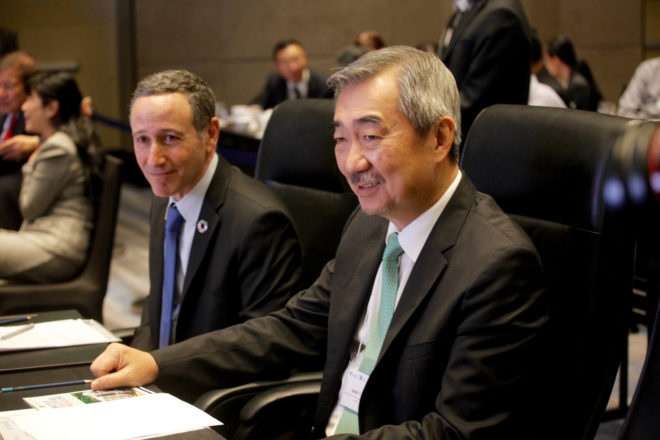
By design, SM City Marikina is an elevated mall resting on stilts on a six-hectare property within the Marikina River Watershed, a known flood-prone area.
As part of its disaster resilience design, SM Prime built SM City Marikina 20 meters farther than the standard regulation of buildings – 90 meters away from the Marikina River centerline. The stilts are also cylindrical in shape, a science-based solution that allows water to flow through the mall structure.
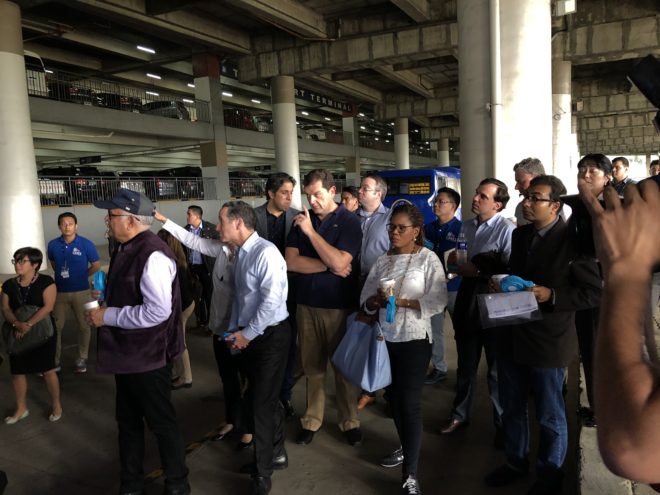
Furthermore, the main roads surrounding the mall layout at the natural ground level was considered in the design. Thus, the lower parking level was built without any wall enclosure. The upper ground floor level was also built at an elevation of 20.5 meters more than the maximum flood recorded.
These features allowed water to flow freely through the parking structure while the mall stands on the third floor lifted by supportive stilts during extreme floods. As such, the mall is also able to open immediately for business while offering a safe haven and free parking to residents of the city during severe typhoons.
Looking back at Ondoy
The delegates were toured around different stations and learned about the story of how the mall withstood Typhoon Ketsana or Tropical Storm Ondoy, which was one of the strongest typhoons that hit the country in 2009.
When Typhoon Ondoy struck, the mall’s resiliency saved almost PHP1 billion in terms of losses from business sales alone. The employees of the mall, including its agencies and tenants, were able to report for work right after the typhoon.
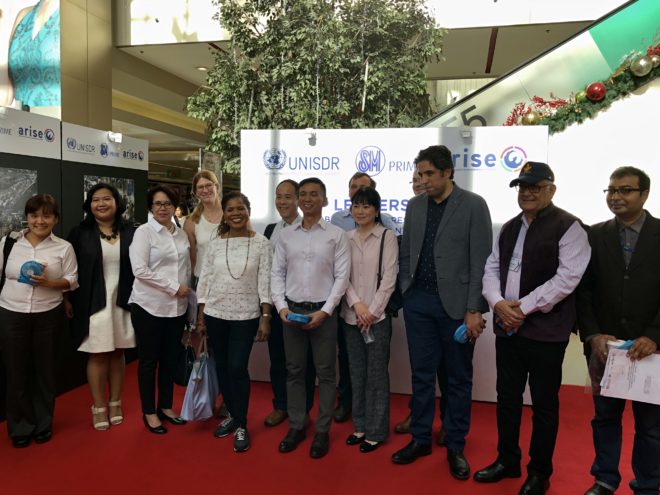
Additional costs of 15% to build a disaster-resilient mall were recouped due to the prevention of potential losses. SM City Marikina also managed to prevent severe damage that could have affected the lives and businesses of more than 1,400 mall employees, affiliates and agency personnel, over 200 merchandise suppliers, as well as regular customers.
Today, SM Prime allocates 10% of capital expenditure for disaster resilience in the construction of buildings.
Mr. Sy said that their investments in disaster residence are on the right track as there have been no damage on their properties and those of their affiliates, mall tenants, jobs and lives vis-à-vis the rest of Marikina City.
“By investing in resilience we minimize vulnerability, better safeguard physical assets, reduce recovery expense, and contribute to local government efforts to safeguard the communities we operate in,” he added.INQUIRER.NET/JPA



































